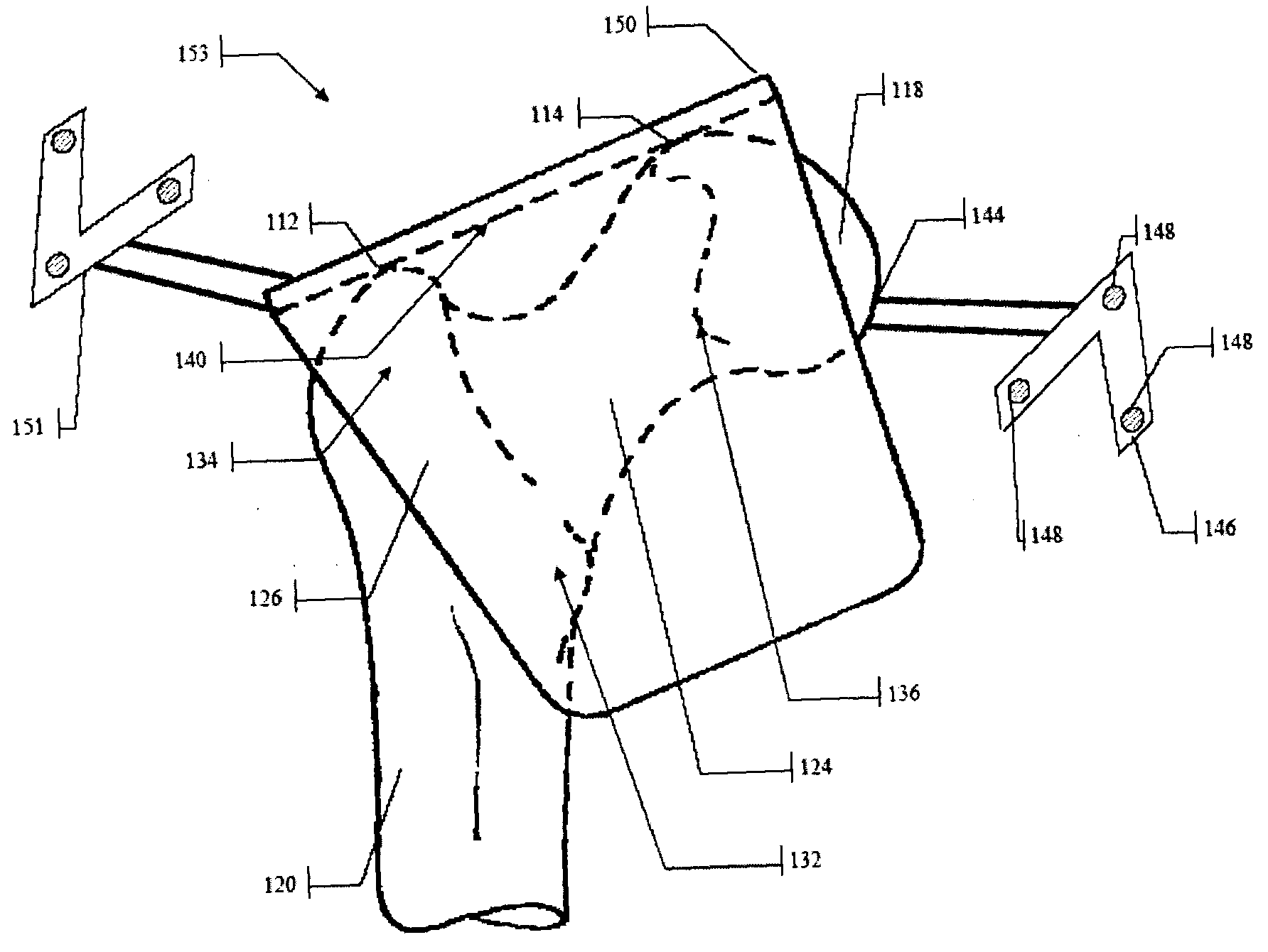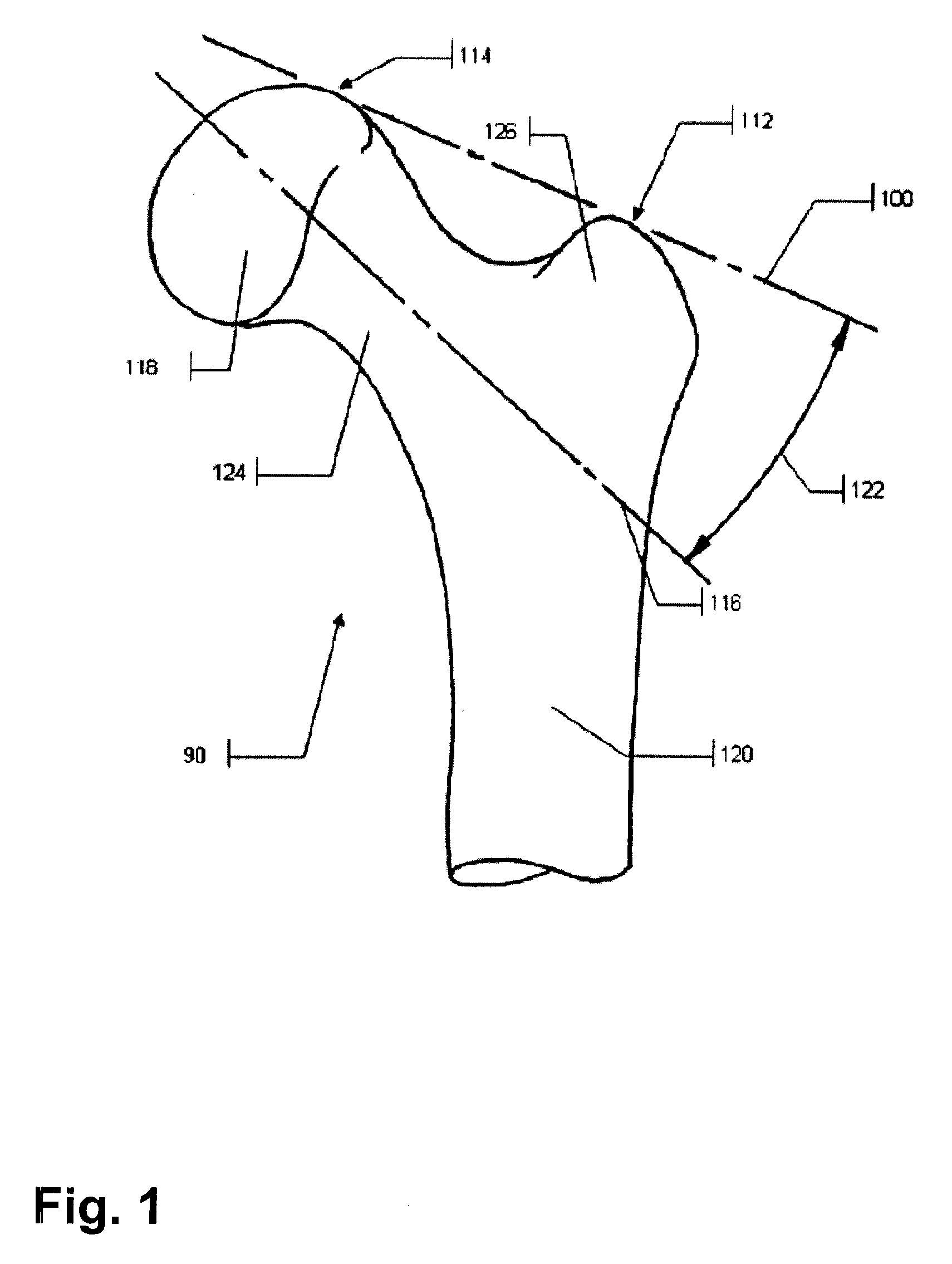Method and Apparatus for Computer-Assisted Femoral Head Resurfacing
a computer-assisted, femoral head technology, applied in the field of computer-assisted surgery, can solve the problems of bone resorption and degeneration, pulmonary occlusion, less predictable outcomes of younger and more active patients, etc., to reduce femoral neck notching/fracture, improve the outcome of resurfacing, and reduce the complication rate
- Summary
- Abstract
- Description
- Claims
- Application Information
AI Technical Summary
Benefits of technology
Problems solved by technology
Method used
Image
Examples
example 1
End-to-End Procedure
[0104]In one preferred embodiment, a surgeon utilized the apparatus and method of this invention to complete full preoperative planning, obtain required intraoperative measurements, and complete the procedure.
[0105]In this embodiment, a surgeon used an anteroposterior (AP) (FIG. 1) and mediolateral (ML) (FIG. 2) radiographs of the femur to draw the preoperative surgical plan. The radiographs were digitized and imported into a custom designed navigation system.
[0106]On the AP radiograph, a surgeon defined the superior reference plane based on a line connecting superior aspects of the femoral head and the greater trochanter (GT). A planned implant axis was also drawn the digitized radiograph and varus / valgus angle was measured between the superior reference plane and the planned implant axis. in accordance to well established practice. Superior and posterior reference planes were drawn on radiographs.
[0107]On the ML radiograph, a surgeon defined the posterior refer...
example 2
Cadaver and Artificial Bone Studies
[0121]An embodiment of the invention was constructed and tested on artificial bone models and cadaver bones. The latter study was performed using 5 pairs of proximal femurs in a simulated OR environment. AP and ML radiographs were taken of each bone. An expert surgeon, experienced in the operation of the mechanical device used to determine the femoral implant axis, performed the preoperative planning procedure.
[0122]Each bone had an optical tracker attached to it (FIG. 3) and each bone was registered with the CAS system built for this embodiment. The registration proceeded by using a Reference Tool (RT) described above.
[0123]On one of each pair of femurs, a novice surgeon used the CAS system to calculate a guide pin axis at the planned angles through the centre of the narrowest point of the femoral neck. The calculated target axis for the drill guide was recorded, and the final pin position measured after the novice surgeon drove the pin. The pin w...
PUM
 Login to View More
Login to View More Abstract
Description
Claims
Application Information
 Login to View More
Login to View More - R&D
- Intellectual Property
- Life Sciences
- Materials
- Tech Scout
- Unparalleled Data Quality
- Higher Quality Content
- 60% Fewer Hallucinations
Browse by: Latest US Patents, China's latest patents, Technical Efficacy Thesaurus, Application Domain, Technology Topic, Popular Technical Reports.
© 2025 PatSnap. All rights reserved.Legal|Privacy policy|Modern Slavery Act Transparency Statement|Sitemap|About US| Contact US: help@patsnap.com



